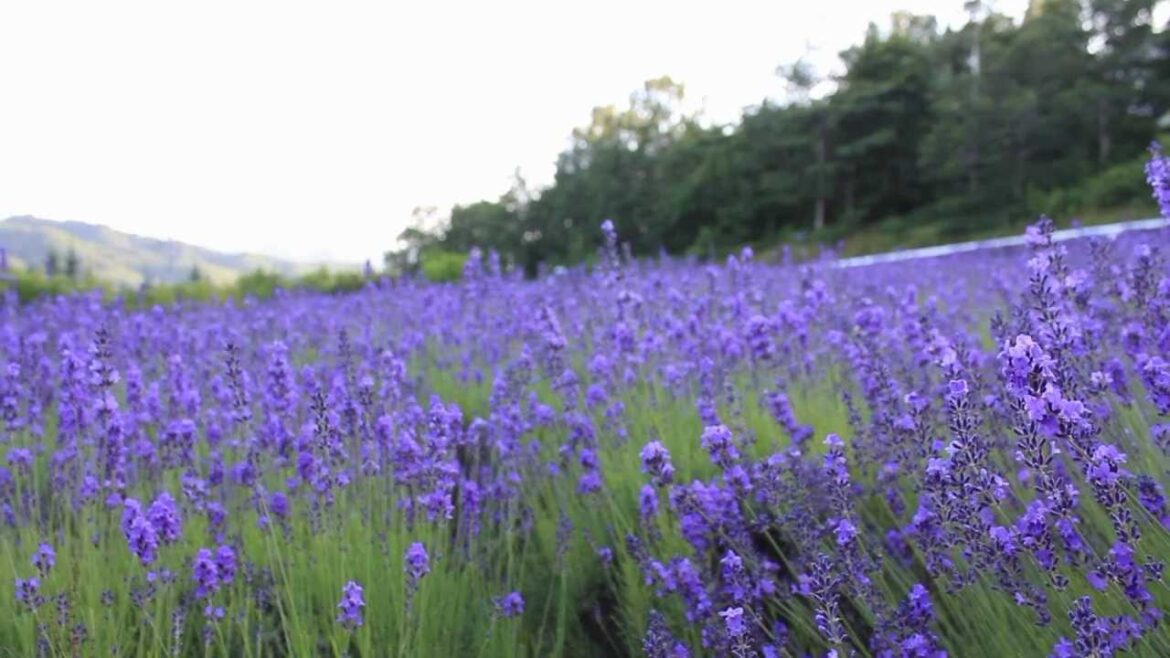ラベンダーのふるさと
〝ラベンダーは富良野″十勝岳を背景に初夏の風に揺れてほのかな香りを漂わせながら咲くラベンダーの花は、すっかり富良野に根づいてしまった。
さて、昭和のはじめ、南フランスを旅したひとりの日本人がいた。それは若き日の曽田政治氏(曽田香料の創始者)だった。地中海の沿岸プロパンズの丘を、紫に彩り咲くラベンダーの色と香りに見せられた曽田社長は、「これを日本に育てられないものかな。」と、心にしながら帰国した。
昭和12年(1937)種子5㎏をフランスより輸入し、北見・札幌・千葉・長野・岡山の各地に試作したが、成育状況は札幌が良効という結果を得た。曽田社長は、昭和15年(1940)南沢麻田農園(現麻田志信氏)の土地釣16haの委譲を受け、北斜面一体にラベンダー耕作を始めた。麻田家はこの「香料作物」の栽培には一家を挙げて協力参加した。
その努力が実って、昭和17年(1942)日本ではじめて〝ラベンダーオイル〟の抽出に成功したのだからすばらしい事だ。こうして国内商品化にこぎつけたのも束の間で、時代は戦時下に入り食糧増産の国策上転作も止むなく〝品種保存〃で農場の一隅に細々と栽培し、ひっそりと戦後を迎えることができた。
昭和23年(1948)平和に転じ、ラベンダーオイルの生産が本格化することができ、南沢の産業振興に貢献できる時代が到来し、ラベンダーに加えて「ハマナス・バラ」などの栽培もはじまり活気に湧いた時代がいまも語られている。
北斜面全体が香りの楽園″となり、見学で訪れる人が絶えなかったという。こうして、ラベンダー栽培熱がたかまり、全道各地特に富良野・ニセコ方面にも苗移植が広まりはじめた。
ところが、昭和40年(1965)ソ連などからの安い合成香料が国産香料をおさえ、昭和47年(1972)止むなく閉鎖の途を辿り、約30年にわたった〝南沢ラベンダー〟がふるさとから消えた。
現在〝観光ラベンダー″として富良野の丘に息づいていることは嬉しい限りだ。
しかし、北海道のラベンダーが南沢麻田農園にはじまったその歴史だけは忘れることなく、〝南沢にラベンダーの花と香り″を残したいものだ。
『南区開拓夜話』から引用
撮影場所;東海道大学 札幌キャンパス
〒005-8601札幌市南区南沢5条1丁目1-1
Hometown of Lavender
“Lavender is Furano,” swaying in the early summer breeze with a faint fragrance against the backdrop of the Tokachi mountains, the lavender flowers have become deeply rooted in Furano.
Now, at the beginning of the Showa period, there was a Japanese person who traveled to southern France. It was Masaharu Sota, the founder of Sota Fragrances, in his youth. Shown the hills of Provençe on the Mediterranean coast, colored and scented by the blooming of lavender, President Sota thought to himself, “Can’t we grow this in Japan?” and returned home with the idea in his heart.
In 1937, he imported 5 kg of seeds from France and conducted trials in various places such as Kitami, Sapporo, Chiba, Nagano, and Okayama, but the best results were obtained in Sapporo. In 1940, President Sota received a 16-hectare land transfer from the Nasawa Mada Farm (now Mr. Madashin Nasawa) and began cultivating lavender on the entire north-facing slope. The Madas supported the cultivation of this “fragrant crop” with their entire family.
Their efforts paid off, and in 1942, Japan succeeded in extracting the first “lavender oil” domestically, which was a wonderful achievement. However, this success was short-lived as the country entered a time of war, and due to the government’s policy of increasing food production, they were forced to stop crop rotation and continue cultivating only a small corner of the farm through “variety preservation,” quietly welcoming the post-war era.
In 1948, the country transitioned to peace, and the production of lavender oil was able to be fully realized. This brought a time of revitalization to Nasawa’s industrial development, as well as the cultivation of plants such as “hamanasu” and roses, in addition to lavender. The entire north-facing slope became a paradise of fragrance, and visitors came to see it regularly. The enthusiasm for cultivating lavender spread throughout Hokkaido, especially in the Furano and Niseko areas.
However, in 1965, cheap synthetic fragrances from the Soviet Union and elsewhere suppressed the domestic fragrance industry. In 1972, the farm was forced to close, and the “Nasawa Lavender,” which had lasted for about 30 years, disappeared from its hometown.
It is heartening to see that it now lives on as “tourist lavender” on the hills of Furano. However, we must not forget the history of how lavender cultivation began in Nasawa, Hokkaido. We must preserve the “flowers and fragrance of lavender in Nasawa” for future generations.
From “Nanku Kaikaku Yawa.”
Location of the photo shoot: Tokai University Sapporo Campus
1-1-1 Nanzawa 5-jo, Minami-ku, Sapporo-shi, Hokkaido 005-8601


2 Comments
wow this is great!
Oh-!really! Ya-y!! Super happy (^o^)/
Thank you!!